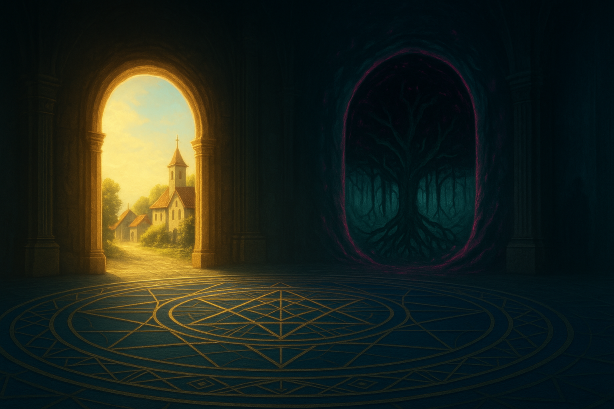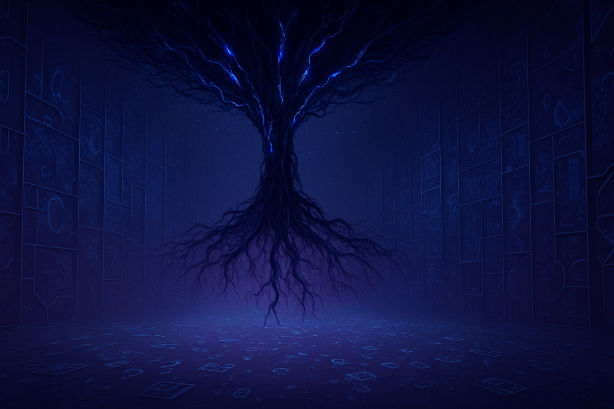Twin Peaks сквозь призму юнгианской психологии: дух времени и дух глубин

В Красной книге Карл Густав Юнг размышляет о соотношении и взаимодействии духа времени (Zeitgeist) и духа глубин. Эти два способа ориентации человека в мире находятся в постоянном напряжении: первый сосредоточен на текущей эпохе, её ценностях, коллективных нормах и рациональном знании; второй уводит нас в архетипические, вневременные и иррациональные слои психики.
В Twin Peaks Дэвид Линч мастерски сталкивает и соединяет эти два течения.
Поверхностный уровень сериала — маленький городок, расследование, повседневные взаимодействия — воплощает дух времени. Он фиксирует культурный ландшафт Америки конца XX века: сосуществование потребительства и интимности провинциальной жизни, влияние массмедиа и фасад моральной устойчивости, скрывающий трещины под ним. Герои действуют в рамках социально одобряемых форматов, а нарратив часто играет с жанровыми конвенциями, особенно детективными.
Однако под этой внешней оболочкой дух глубин прорывается с огромной силой.
Линч вводит логику сна, архетипические фигуры и сюрреалистические образы, возникающие из коллективного бессознательного. Красная комната, Человек с другой стороны, Великан и БОБ — это не просто «мистические» элементы; они посланники глубинной психики, которые сталкивают зрителя с истинами, необъяснимыми в рамках рационального повествования. Эти сцены, часто нарушающие временную и пространственную непрерывность, напоминают нам о том, что истинные силы, формирующие события, лежат за пределами сознательного контроля.
С юнгианской точки зрения, дух глубин в Twin Peaks — это попытка вернуть современного человека к архетипической реальности, задаче, которую Юнг считал необходимой для психологического и культурного обновления. Сериал постоянно искушает зрителя оставить безопасный «дух времени» и погрузиться в хаотичное, нуминозное пространство глубин, где возможна трансформация, но она никогда не гарантирована.
Теперь если спросить: может ли дух глубин принести нам видения будущего — Эры Водолея, как архетипа грядущего времени? Ответ будет парадоксален. Эра Водолея с ее обещанием взаимосвязанности, новых форм сознания и перехода от иерархий к сетевым структурам действительно может находить свои символические ростки в образах Линча. Многомерность Красной комнаты, размытые границы реальностей и наличие психических «сетей» между персонажами — всё это резонирует с символизмом Водолея. Здесь дух глубин становится пророческим, предлагая символические чертежи того, чем может быть коллективное сознание будущего.
Но дух времени в Twin Peaks тоже говорит громко. Он напоминает о рисках отрыва от реальности, об опасности потеряться в эзотерических или архетипических видениях без укорененности в реальных условиях эпохи. Линч показывает нам хрупкость сообществ, насилие, скрывающееся под вежливыми фасадами, и уязвимость индивидов к силам одержимости — будь то буквальной (как в случае Лоры) или метафорической (социальное давление, зависимости, иллюзии).
Таким образом, сериал становится диалогом между двумя духами. Дух времени в Twin Peaks удерживает нас в расследовании, в отношениях, в знакомом социальном мире; дух глубин влечёт нас к видениям, снам и архетипическим драмам. Для Юнга именно этот диалог мог открыть путь к индивидуации — интеграции противоположностей в психике.
В конечном итоге Twin Peaks не даёт простого ответа. Вместо этого он приглашает нас жить на пороге — между требованиями эпохи и зовом глубин, понимая, что именно в этом напряжении заложена возможность как личной, так и коллективной трансформации. Станут ли символы Водолея, увиденные в глубинах, нашей реальностью — зависит от того, сможем ли мы выдержать их интенсивность, не потерявшись окончательно в их странности.
Twin Peaks Through the Lens of Jungian Psychology: The Spirit of the Times and the Spirit of the Depths
In The Red Book, Carl Gustav Jung reflects on the relationship and interaction between the spirit of the times (Zeitgeist) and the *spirit of the depths. These two modes of human orientation in the world are in constant tension: the first focuses on the current era, its values, collective norms, and rational knowledge; the second draws us into the archetypal, timeless, and irrational strata of the psyche.
In Twin Peaks, David Lynch masterfully brings these two currents into contact and conflict. The surface level of the series—the small-town setting, the investigation, the everyday interactions—embodies the spirit of the times. It captures the cultural landscape of late 20th-century America: the coexistence of consumerism and small-town intimacy, mass media’s influence, and the veneer of moral stability that conceals fractures beneath. Characters here behave within socially accepted frameworks, and the narrative often plays with genre conventions, especially the detective story.
Yet, beneath this outer layer, the spirit of the depths bursts through with overwhelming force. Lynch integrates dream logic, archetypal figures, and surreal images that emerge from the collective unconscious.
The Red Room, the Man from Another Place, the Giant, and BOB are not just “mystical” elements; they are emissaries of the deep psyche, confronting the viewer with truths that cannot be explained within the rational narrative. These scenes, often breaking the temporal and spatial continuity, remind us that the true forces shaping events lie beyond the realm of conscious control.
From a Jungian perspective, the spirit of the depths in Twin Peaks is an attempt to reconnect modern man with archetypal reality—a task Jung saw as essential for psychological and cultural renewal. The series constantly tempts the viewer to leave the safety of the “spirit of the times” and plunge into the chaotic, numinous space of the depths, where transformation is possible but never guaranteed.
Now, if we ask: can the spirit of the depths bring us visions of the future—of the Age of Aquarius, as an archetype of a coming era? The answer is paradoxical. The Age of Aquarius, with its promises of interconnectedness, new forms of consciousness, and a shift from hierarchical to networked structures, can indeed find its symbolic seeds in Lynch’s imagery. The multidimensionality of the Red Room, the blurred boundaries between realities, and the presence of psychic “networks” between characters—these all resonate with Aquarian symbolism. Here, the spirit of the depths becomes prophetic, offering symbolic blueprints for what a future collective consciousness might be.
But the spirit of the times in Twin Peaks also speaks loudly. It reminds us of the dangers of disconnection from reality, of losing ourselves in esoteric or archetypal visions without grounding in the actual conditions of the era. Lynch shows us the fragility of communities, the ever-present violence beneath polite facades, and the susceptibility of individuals to forces of possession—whether literal (as in BOB) or metaphorical (social pressures, addictions, illusions).
Thus, the series becomes a dialogue between the two spirits. The spirit of the times in Twin Peaks grounds us in the investigation, the relationships, the familiar social world; the spirit of the depths pulls us toward visions, dreams, and archetypal dramas. For Jung, it was precisely this dialogue that could open the way to individuation, the integration of opposites within the psyche.
In the end, Twin Peaks doesn’t give a simple answer. Instead, it invites us to live at the threshold—between the demands of the era and the calls of the depths—aware that in this tension lies the possibility of both personal and collective transformation. Whether the Aquarian symbols glimpsed in the depths will become our reality depends on whether we can bear their intensity without losing ourselves entirely to their strangeness.
